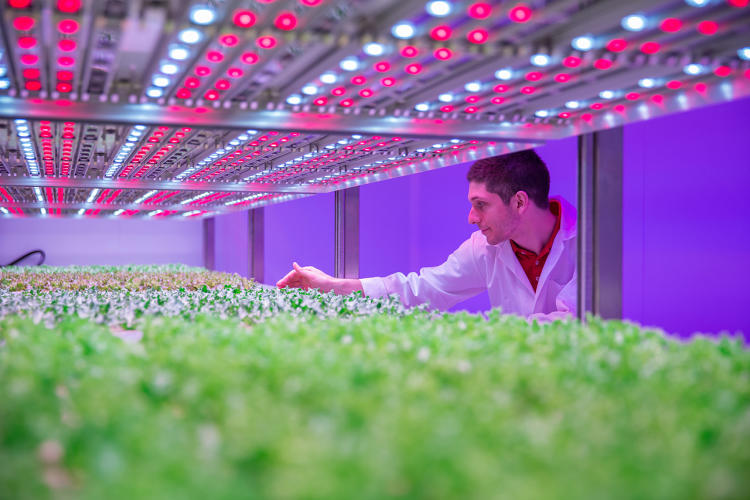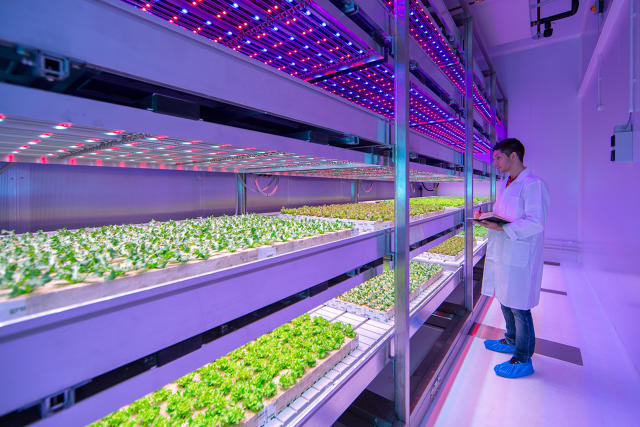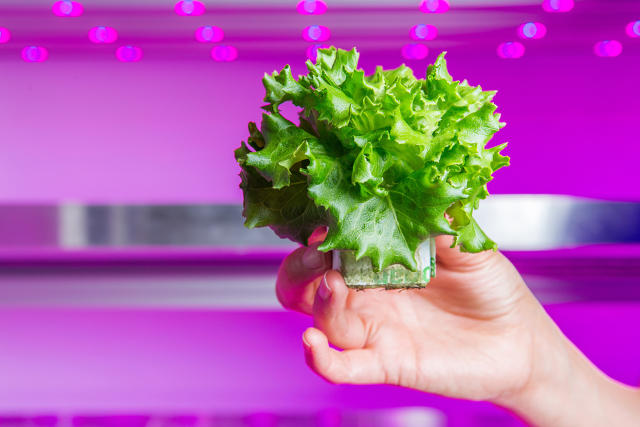 |
| Reviews and Templates for Expression We |
In This Huge Urban Farming Lab, LED "Recipes" Grow Juicier Tomatoes And Sweeter Basil
The massive Netherlands center run by the lighting company Philips is pushing indoor farming to its limits.

Behind a vault-like door, the long, windowless room has the same purple glow as the cabin on a Virgin America flight. Instead of passengers, the space is filled with row after row of plants, each growing under a carefully calibrated series of red and blue lights. White-coated researchers walk by studying each leaf of lettuce or kale. Welcome to the GrowWise Center, one of the largest homes for urban farming research in the world.
The new Netherlands-based lab belongs to the lighting company Philips, which realized several years ago that its LED lights could help shape a new path for farming. "We took LED lights, a new technology, to see how we could apply it in agriculture," says Gus van der Feltz, Philips global director of city farming. "Could we make a difference and improve the way plants are grown? As it turns out, we can."

If you're going to grow food indoors—especially in a windowless warehouse like the 30,000-square foot Green Sense Farms, one of Philips' customers—you'll need light. The LEDs provide a substitute for the sun, but they also go further; Philips designs "light recipes" that can make particular crops grow faster or produce more nutrients.
"We can tailor these recipes to the photosynthesis response of the plant," says van der Feltz. "By being able to tweak the spectrum—the color the plants see—and put the lights exactly where they need it, we can dramatically increase yields and improve fruit density and quality."
By changing the mix of lights, tomatoes can grow with more vitamin C. Basil gets tastier. The lights can be used as a supplement in more traditional greenhouses, but are even more effective in a closet-like vertical farm with no natural light.

"In a vertical farm, the complete growing environment can be controlled, and we can find even more ways to tweak," he says. "We can grow the same lettuce two different ways: One is soft and buttery and has a very mild taste, the other way is crispier and maybe a little bitter. We can cater to different people."
The company has been working on experiments to improve these light recipes with customers for a few years, but realized they'd move faster with a dedicated lab.
"We've also found that in order to drive the technology forward in order to create better solutions, it would be beneficial for us to have our own testing center," van der Feltz says. "And it would help us strengthen our position in the market as a key innovator in vertical farming."
The lab can run 97 experiments simultaneously. They plan to optimize growing methods and will also test new seed varieties that wouldn't have been possible to grow on a traditional farm outdoors. "If we can eliminate the risk of disease and climate for the grower, then we can also create different varieties that are optimized for taste, or nutritional value, or perhaps speed of growth," he says.
Like other indoor growing, the methods that Philips and its customers are using can also eliminate most water used in traditional farming, along with pesticides. As pressures grow on traditional agriculture—and as the world tries to figure out how to feed an extra two billion people over the next few decades—Philips is convinced that vertical farming will play an important role.
"We believe it's not just something that's good for society, but something that we can make a business out of," van der Feltz says. "This is basically a growth market."
|
|
|
|
Copyright 2011 Energy and Technical Services Ltd. All Rights Reserved. Energyts.com |